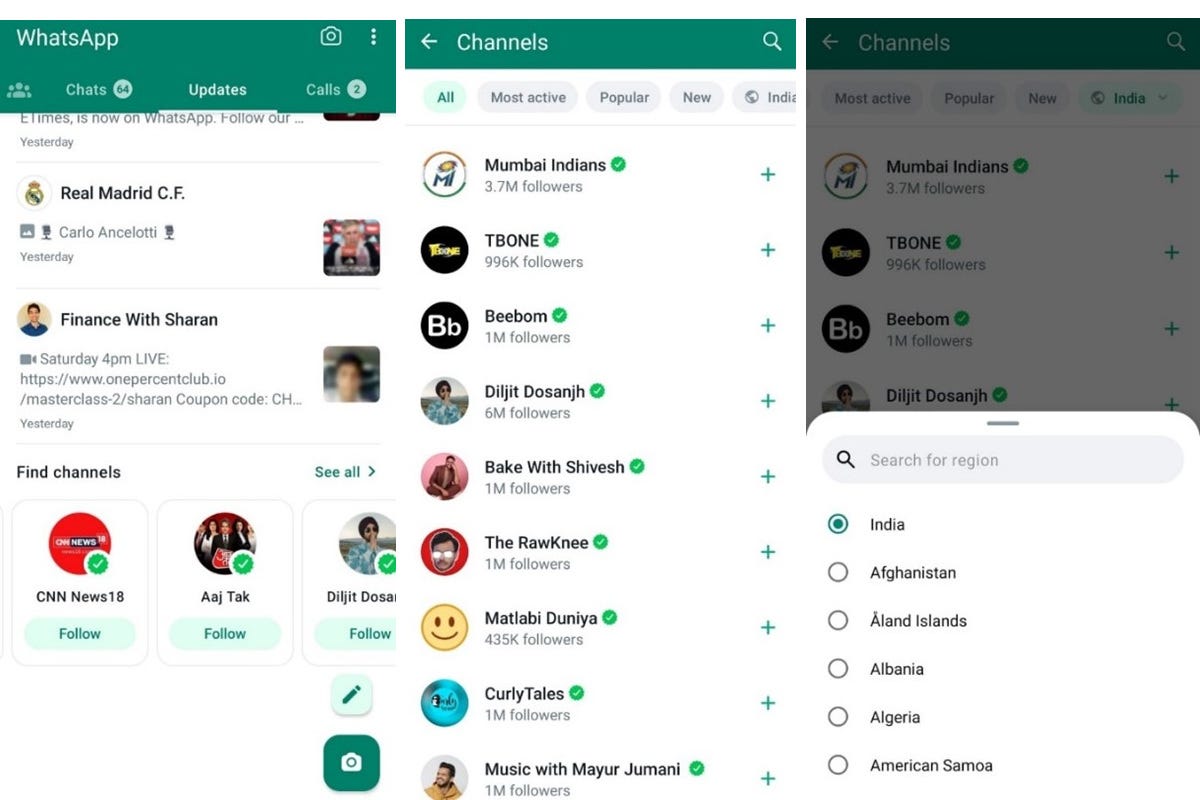A deep dive into WhatsApp Channels
In 2019 Mark Zuckerberg had talked about his ambitions to build an all-in-one tool that could bring together “calls, video chats, groups, stories, businesses, payments, commerce, and…many other kinds of private services.” 4 years later we are seeing bits and pieces of his vision becoming a reality. Some of those endeavors have been very successful like Instagram Reels. But for every Instagram Reels there are dozens of apps and add-ons that didn’t quite capture the imagination of netizens. Lasso, Facebook Dating, Slingshot and even our very own UPI-powered WhatsApp Pay come to mind when we talk about Meta (formerly Facebook) products of yesteryears which sort of missed the mark when it came to goals.
In this week’s edition of Product Edge we will be taking a closer look at the newest product of the Meta assembly line, WhatsApp Channels.
A brief background on WhatsApp Channels
Channels is basically a feature within WhatsApp that enables its users to broadcast messages to wide audiences. Sounds very similar to the broadcast feature that WhatsApp already had? The difference is that instead of having the broadcasters manually select the users in their broadcast lists, individual users now have the freedom to select the broadcast lists i.e., ‘Channels’ that they want to subscribe to. We will now take a look at different aspects of WhatsApp Channels.
Navigating through Channels
Channels can be accessed through the Updates tab on the app. Each Channel contains the posts made by its administrators. As mentioned earlier Channels is a one-way broadcasting medium, so individual users cannot post any content of their own but they can interact with the posts made by the Channel owner with emoji reactions.
Back on the Updates tab scrolling further down takes users to the ‘Find channels’ section which provides both recommendations for popular channels and also allows users to manually search for channels or topics that they might be interested in. Region based search functionality is also included in Channels as users can search for channels which are popular and trending in other countries.
All WhatsApp users can set up a channel of their own. Creating a channel is a seamless process– the user has to simply enter the channel name and description and it is ready to operate. By default, the channels are public and anyone can find it by its name. Subscribers will not be able to see the details of the channel admins which provides a layer of privacy to the latter. Channels has a 30-day content expiry policy. Post history will be stored for a period of 30 days after which the content will automatically disappear.
Criticism
So, on paper WhatsApp Channels does seem like a brilliant idea. You now have the convenience of getting all your desired news and updates from your favorite content creators, sports teams and celebrities in a single accessible platform all while having the ability to chat with your contacts and seeing the status updates that they have posted in the last 24 hours. But the billion-dollar question that arises is do we really need what is essentially a faux news feed on our WhatsApp status screen? The main point of criticism for WhatsApp Channels has been centered around the fact that it has cluttered up a previously straightforward UI that became ubiquitous owing to its simple and intuitive design. The issue lies in the fact that the traditional Status updates have now been pushed into a small area at the top (statuses are now displayed horizontally) and majority of the screen space is taken up by Channels. In order to switch back to the traditional vertical view of status updates, users have to unfollow all the channels that they have followed.
As mentioned earlier Channels seems like yet another extension of Mark Zuckerberg’s vision of creating a super-app that would function like a one-stop shop for all of our needs. But what needs to be kept in mind is that WhatsApp's success can be largely attributed to its minimalistic and user-friendly UI. There have been several competitors like Telegram that emerged over the years that offered more advanced features and to their credit they have been able to create a niche market of their own. But none of them have come close to the market share that WhatsApp currently enjoys. The introduction of Channels, communities, and similar features is a departure from the simplicity that made WhatsApp so popular in the first place.
Furthermore, the status updates that users have viewed are hidden within the ‘Viewed updates’ section. Many users have complained that this feature was unnecessary and that it has made their experience on WhatsApp worse.
Interestingly, the web version of WhatsApp has kept separate tabs for Status updates and Channels. If the same functionality were implemented in the app version of WhatsApp, it could potentially mitigate the primary criticism of this feature. By separating the core messaging and status functionality from the additional content-driven features, WhatsApp could strike a better balance between maintaining its simplicity and providing new features, thereby offering a more organized and user-friendly experience for its vast user base.
Conclusion
Channels is yet another attempt from Meta to further expand the use case of WhatsApp just like it has done with its other products. For example, earlier this year they released WhatsApp Communities which is meant to function like a group of groups.
Purely from a UI perspective Channels is a well-designed feature. Creating and navigating through channels is a seamless experience. If it had been launched as a separate tab or even as a standalone app the reception would probably not be as polarizing as it has actually been. But when the ease of use of one of the existing beloved features is sacrificed for the sake of pushing forward a new feature, then it understandably becomes a problem.



